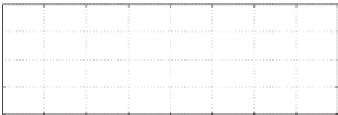Environmental Engineering Reference
In-Depth Information
5
i
ref
i
a
2.5
0
−2.5
−5
1.5
e
i
1
0.5
0
−0.5
−1
−1.5
−0.04
−0.03
−0.02
−0.01
0
0.01
0.02
0.03
0.04
Time [s]
Figure 17.5
Transient responses of the DB predictive controller without a local load
17.3.2 Transient Performance
A step change in the current reference
I
d
from 2 A to3Awasapplied (while keeping
I
q
0).
As there is no local load connected to the system in this experiment, all the generated active
power was injected into the grid via a step-up transformer. The transient response of the output
current
i
a
, reference current
i
ref
and the corresponding current tracking error
e
i
are shown in
Figure 17.5. The DB controller demonstrated very good dynamic performance and its transient
response is indeed very fast.
=
17.4 Summary
A DB predictive controller is designed to control the grid current of inverters connected to
the grid. The controller demonstrated very good performance in tracking sinusoidal reference
currents when there was no non-linear local load. When there was a non-linear local load, the
THD of the current increased considerably. Also, because of the fast dynamics, the sensitivity
to parameter variations is high.
The current controllers presented in Chapters 3 and 15-17 are compared. The current
H
∞
repetitive controller clearly outperformed the other controllers in terms of power quality.























Search WWH ::

Custom Search